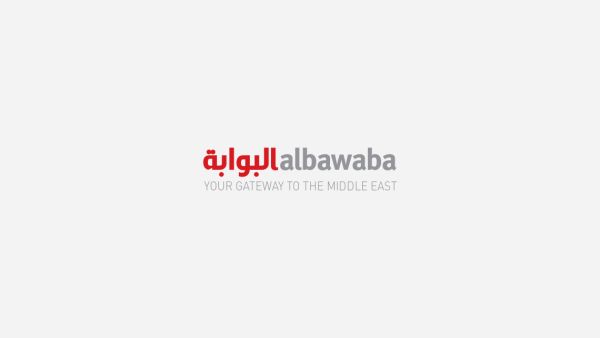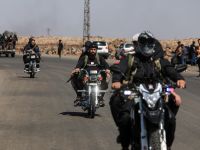Syria remains one of the Middle East’s most isolated economies, resisting the economic trends sweeping the rest of the region (i.e. privatization). The government still keeps intact many policies that protect home-grown industries at the expense of attracting foreign investment. Such policies include high tariffs and numerous import restrictions and limited access to capital for those in the private sector.
The country’s economy depends primarily on oil, remittances from Syrians working abroad (primarily in Lebanon) and agriculture. Its economy is also affected by external matters such as foreign aid, the peace process and relationship with neighboring states. The country’s economy is damaged by its inclusion on the U.S. list of countries that sponsor terrorism.
Nevertheless, Syria has great growth potential from its geographic location, a population with a long history of entrepreneurship, sufficient natural resources, high tourism potential, relatively fertile land and inexpensive raw materials.
Investing in these areas and further opening the economy can have a large impact on the country’s inhabitants.
Syria’s population is sixteen million with a 3.5 percent annual growth rate. This factor and Syria’s relative domestic stability have made it an increasingly attractive destination for foreign investment, especially Arab, during 1991 to 1995. During this period, the average GDP growth stood at 7 percent at constant prices, and per capita GDP grew by more than 3.7 percent per year. From 1994 to 1995, Syrian GDP grew by 19.2 percent, and industrial production increased by about 16 percent.
Since the break-up of the Soviet union, Syria has become increasingly oriented towards Western Europe, and, in particular, the EU. Exports to Europe hit over 60 percent of total exports versus about 25 percent to Arab countries. Imported goods from Europe account for nearly 50 percent of total imports.
Petroleum and related products account for about 60 percent of exports. Other ranking items include clothes, fruit, vegetables and cotton. Roughly one-third of imports are machinery and transport equipment, and road vehicles make up more than 11 percent of the total. Iron and steel account for about 15 percent of all imports, while chemical and related products capture 10 percent.
The economic gains in the first half of the 1990s have not been widely distributed. Additionally, unemployment is a growing concern as roughly 60 percent of the population is estimated to be under the age of twenty. Water is another problem as Syria may face a serious water shortage by the end of the decade given current water policies.
During the early 1990s, the Syrian economy experienced several years of brisk growth. Between 1990 and 1995 average GDP growth stood at 7 percent at constant prices, and per capita GDP grew by more than 3.7 percent per year. From 1994 to 1995, Syrian GDP grew by 19.2 percent, and industrial production increased by about 16 percent. And in 1996, GDP grew by 7.2 percent and industrial production by 5.1 percent.
But the economy began to experience a downturn because of a worldwide recession, declining oil prices and agriculture commodities as well as a reduction in foreign aid. More troubling for the country’s long-tern economic outlook is the amount of oil remaining. It is believed that without any new discoveries – and current exploration have not yielded positive results – the country may turn into an oil importer within the next 5-6 years. There are, however, other alternatives to lure foreign investors in its gas development, exploration, production and export.
There are many areas that must be reformed before the country can hope to invigorate its economy by means other than oil. The government still maintains many policies that inhibit large growth. The country has restricted imports, imposed high tariffs, and banned imports of products that compete with local industries. The country is also burdened with a large external debt, which hampers Syria’s access to international capital markets and promised loans from the European Investment Bank.
A government study estimates that it will cost the country $6 billion to revamp the country’s feeble industry and implement the reforms necessary to gain acceptance into the Euro-Mediterranean Partnership. The report concluded that besides infrastructure development, vocational skills need to be developed, industrial facilities rehabilitated and Syrian industries made more competitive.
The country’s inclusion on U.S.’s list of states that sponsor terrorism is a political hurdle that negatively impacts the country’s economy. This causes U.S. firms interested in business or investment opportunities to consider U.S. export controls, the lack of guaranteed trade financing and additional tax implications.
Although the country has a long path of reform ahead, it has begun to take initial steps in this direction. As the government slowly opens its economy to foreigners, it has told the public sector to increase efficiency and prepare for competition. Furthermore, the government in the last seven years has been opening to private participation some sectors that have formerly been solely in the public domain, such as food processing, textiles and pharmaceuticals. But the main benefactors of the opening to the private sector are those businessmen with close or family contacts to the top political echelons.
The country has also taken important strides during the 1990s in developing its rickety communication infrastructure. The country has awarded hundreds of millions of dollars in contract that is expected to increase the country’s fixed lines by 1 million by 2004. This would bring Syria’s fixed lines to 1.65 million.
The government has also announced tenders for GSM service and Internet, which is now available only on a limited scale to government entities. Cellular service is not available.
Syria is also upgrading its power-generation capacity. This capacity is now 6,500 megawatts, although there are still regular short power outages in large cities, especially in the summer. A total of 97 percent of the population have electricity. Furthermore, several studies have been commissioned such as investigating the possibility of launching investment and foreign trade banks, and opening a stock market, something which would require increased transparency and expose the economy's true condition. Thus far, neither program has advanced past the preliminary declaration stage.
The country’s 1998 exports were roughly $2.2 billion, a 30 percent drop from the year before, which the government attributed to the drop in oil and cotton prices. Those two commodities comprise about 81 percent of the country’s total exports.
Economic Policy
From the 1960s until recently, the Syrian government pursued policies aimed at expanding the public sector, with tight controls imposed on private sector activity. During the 1980s, the country suffered from a severe foreign exchange shortage, aggravated by a fall in remittances and aid flows from the Gulf and a severe drought in 1989-1990 that forced the government to sharply boost food imports.
As the government imposed draconian foreign exchange and trade controls, a parallel economy emerged, based on large-scale smuggling to and from neighboring Lebanon. The Syrian government cracked down on smuggling in May 1993, and most of the pre-smuggled commodities can now be imported via official channels. Smuggling has not, however, been eradicated.
Syria’s economy in the 1990s is undergoing a slow and controlled transition toward a market system. Since 1990, foreign exchange controls have eased due to a renewal of external foreign exchange flows, both official and private. Additionally, the government has taken gradual liberalization measures to open up the economy. Until recently, the government pursued policies aimed at expanding the public sector, with tight controls imposed on private sector activity. All large industry, including the banking and insurance sectors, was nationalized in the 1960s and continued to grow with the help of Arab aid in the 1970s. With a liberalization of trade and foreign exchange controls, a greater proportion of economic activity is now within legal channels, but the parallel economy remains a key element of the economy.
Since 1991, private sector investment has picked up noticeably, as businessmen have taken advantage of incentives offered under a new investment law, Law No. 10. Liberalization measures implemented in recent years now permit private enterprise to retain foreign exchange from exports, 75 percent for industrial products and 100 percent for agricultural commodities, and to finance permitted imports for inputs and a number of basic commodities using foreign exchange gained from exports.
Although it has retained a monopoly on wheat and flour imports, the government widened the list of imports permitted to the private sector, including items formerly reserved for public sector trading companies, such as rice, sugar and tea.
In 1990, the government established an official parallel rate, known as the neighboring countries’ rate, to provide further incentives for remittances and for trade through official channels. This rate and others more closely reflect the real value of the Syrian pound; Use of such rates continues to expand, a trend that should eventually lead to unification of the multiple rates presently used for different purposes.
Economic Figures
1999* 1998 1997
Real GDP (US$ billions) 12.10 12.10 12.65
Per Capita GDP (US$) 790 800 837
Real GDP Growth (percent) 0 -4.4 0
Inflation (%; official) 2 2 2.2
Unemployment (%; official) 7 7 7
Exports (fob, US$ billion) - 3.09 4.06
Imports (fob, US$ billion) - 3.26 3.6
Trade Balance (US$ billion) - -0.17 0.46
Government Revenues (US$ billions)- 4.11 4.05
Government Expenditures (US$ billions) - 4.73 4.42
Overall Deficit (US$ billion) - 0.62 0.37
Gas Production (millions of cubic meters) - 2,487 2,270
Foreign Aid
Between 1977-1994, Syria received cash transfers from Arab Gulf states of almost US$ 17 billion in total, helping the government to sustain a defense establishment budgetary burden that amounted to some 50 percent of its annual budget expenditure. The emphasis of the aid shifted after 1991 to supporting specific projects, allowing Syria to buy power stations, a one million line telephone network and a new sewerage system.
In early February 1995, the European Union (EU) approved a new aid package of about US$ 50 million to finance development projects in Syria, despite concern about Syria’s debt problems at the time (Syria owed some US$ 750 million to European creditors prior to receiving French assistance). The aid package included financing to set up a Syrian export promotion center, responding to one of the EU’s concerns that Syria’s export revenues are too dependent on oil. Other projects in the package included the upgrading of water and electricity systems, technical assistance to the banking sector and a tourism venture.
Foreign Debt
As of the end of 1999, Syria's external debts stand at about US$20 billion, which is owed to Russia and to a number of European countries. France’s decision to settle its debt problem with Syria was highly appreciated by Damascus, although not stated publicly, and could open the way to an EU-Syrian trade agreement. Syria hopes that it will be in line for substantial debt relief once a peace agreement is reached with Israel.
Exchange Rates
The Syrian exchange rate is a complicated system that has been an inhibiting factor in attracting foreign investment. Beginning in 1998, the government reduced the number of exchange rates from eight to three. The official rate is SP 11.2 to $1, while the currency's real value is worth SP 50 to $1.
Academics, businessmen and economists have urged the government for years to implement a simplified system. Thus far there has only been little change. For example, beginning January 1, 1995, the government attempted a rate unification, calculating government accounts at the neighboring countries’ official rate of SP 43=US$ 1, rather than the previous SP 23=US$ 1. The official rate of SP 11.2=US$ 1, which had been in existence since 1988, was still used to calculate some transactions, including hotel bills paid by foreigners and various government transactions. The SP 23=US$ 1 rate remained in effect for some customs tariffs. In contrast, the black-market rate in Damascus hovered between SP 48 to 54=US$ 1 since the early 1990s, while the rate in Beirut is around SP 54=US$ 1.
Major Economic Domains
Industry
Presently, Syria's industrial sector is weak, concentrating on basic products such as foods, chemicals and soaps. Industries suffer from obsolete equipment and technologies and a lack of available capital. Under these conditions, the industry sector will be unable to offset lost oil revenues in the event that the petroleum industry begins to dry up.
Textiles constitute the largest manufacturing industry in Syria. Other industries include petrochemicals, fertilizers, cement, soap, glass, food processing, sugar processing, tobacco, iron and steel, tanning and vegetable oil.
Syrian manufacturing industries began to grow in the 1960s. The government encouraged industrialization by raising tariffs on imported consumer goods and by providing tax exemptions and credit for domestic industries.
Heavy industry, banking, insurance and utilities remain in the public sector. Food processing, textiles, pharmaceuticals and transportation have slowly been opened to the private sector during the last seven years.
Agriculture
Syria's total crop production may decline by roughly 30 percent in 1999 because of a serious drought during the first six months. Further exacerbating the problem has been the country's wide use of irrigating pumps, which have caused the water table to drop significantly.
The country's principal found crop is wheat. In 1998, the country harvested 4.1 million tons of wheat, while it is expected to yield only 2.3 million tons in 1999.
Syria is comprised of 20 percent arable land. Syria produces a wide variety of crops, some in sufficient quantity for export. The major crops are cereals, primarily wheat and barley, cotton, tobacco, grapes, olives, citrus fruits and vegetables. Agricultural land is privately owned for the most part.
Tourism
The tourism sector in Syria has developed slowly, partly because of ambivalence on the part of the government, which is hesitant about permitting a massive influx of foreign visitors, and partly because Syria’s image abroad has deterred would-be tourists from visiting. In recent years, the average number of tourists visiting Syria was about two million, most of them from Arab countries. The Syrian government had anticipated an increase in the number of tourists to six million by 2000, but without a peace agreement, this will be a difficult target to meet. In 1999, the number of tourists amounted to about 1.3 million.
© 2000 Mena Report (www.menareport.com)







